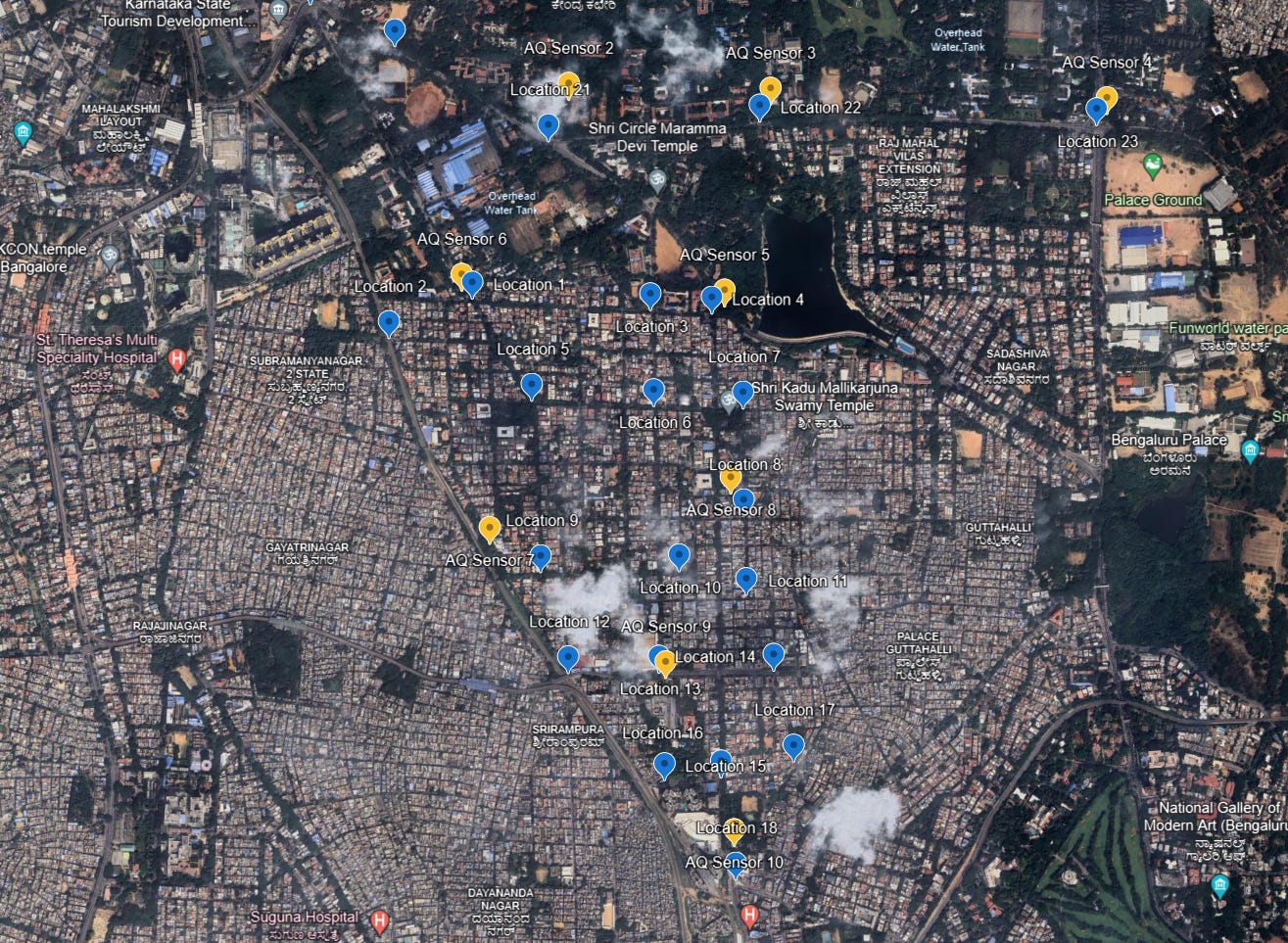Respirer's monitoring scales up – from rural areas in Bihar to mines in South Africa
And an update on our green mobility solutions for Bengaluru
Bihar CM launches rural air quality dashboard made by Respirer and IIT Kanpur
We’re thrilled to share that our air quality dashboard for Project AMRIT, made collaboratively with the Centre of Excellence - ATMAN, IIT Kanpur, was launched by Bihar Chief Minister Nitish Kumar in Patna on March 4. The launch was part of the ‘Bihar Climate Action Conclave and Expo’, where the CM, government officials and environmental organisations released a strategy document outlining long-term plans for climate-resilient and low-carbon development pathways. We’re excited to be a part of this climate action!
Project AMRIT’s rural air quality monitoring network is a first for any Indian state. Each of Bihar’s 534 blocks now has an air quality sensor, which provides real-time data for PM2.5, temperature and humidity. This data is uploaded to an IIT Kanpur server and made available to division, district and block administrators. It is graphically represented via line charts, bar graphs and box plots.
This is, perhaps, climate action at its best! Small towns and remote villages will now fall within the ambit of this hyperlocal air quality monitoring network, and our fellow Indians in rural areas can be one step closer towards clean air policies.
WATCH: The launch of Project AMRIT’s rural air quality dashboard in Patna on March 4, 2024.
Respirer’s monitors help manganese mines meet emissions reporting requirements in South Africa
We recently received a testimonial from Mohlabani Jan Mepha, a client of Respirer’s in South Africa, about how our atmos monitors are helping manganese mines in the Northern Cape meet their emissions reporting requirements. Mr. Mepha, who manages a mining services company, shared this with us on email:
“I came across the atmos devices in 2019 and have been using them since then. I was fascinated by their real-time technology. Besides, they are portable, very simple and affordable. One of my clients – a manganese mine in the Northern Cape – needed real-time air quality monitoring of PM10 and PM2.5 to comply with the reporting requirements of the National Atmospheric Emission Inventory System under the National Environmental Management: Air Quality Act (2004). The client wanted the monitoring device to not be expensive or complicated, to be accurate, and to have real-time monitoring. Atmos fit the bill perfectly!”
We also asked Mr. Mepha about what his clients do when the pollutant levels at their mines breach the safe limit. He said:
“Under Section 11.5 of the Mine Health and Safety (MHS) Act 29 of 1996, an employer, in consultation with his or her appointed occupational hygienist (as per Section 12 of the Act), must carry out an investigation, compile a report with findings and recommendations, and submit copy to the office of the Principal Inspector of Mines, Department of Mineral Resources and Energy.
Now, with the atmos devices, you can see the [air pollution] trends early before they touch unsafe levels, and should this happen, you can attend to the situation immediately. While with gravimetric sampling method for dust monitoring [also used by my clients] you will know about unsafe air conditions only three to five days later.
Additionally, Hotazel in the Northern Cape, where my client’s manganese mines are located, can be hot, around 35 to 45 degrees Celsius. But the atmos devices have never disappointed – they have never become overheated or malfunctioned due to heat or rain. And their readings have not been affected either!”
Correlating air quality and traffic data for green mobility in Bengaluru
Since July 2023, Respirer’s atmos sensors have been monitoring air quality in 10 locations in Bengaluru’s Malleswaram area. But this activity hasn’t been happening in isolation. It’s part of a larger, multi-stakeholder project with Bosch Ltd. India and GIZ India.
The project aims to present green urban mobility solutions to Bengaluru’s authorities and develop air quality management systems for the city. To this end, Respirer Living Sciences and Datacorp Traffic Private Limited, a transport data analysis company, have been collecting air quality and traffic data, respectively. In particular, Respirer's monitor atmos-NiMO has been collecting data 24/7 for the last eight months for PM2.5 and PM10 (particulate matter), nitrogen dioxide, carbon monoxide, temperature and humidity.

Respirer also collocated one of its devices, initially with the Karnataka State Pollution Control Board’s reference-grade monitoring station in Hebbal and then at CSTEP, Bengaluru. We did this to validate our sensors’ data with the reference monitor’s data and to ensure data accuracy. On its part, Datacorp used traffic cameras to gather data for a week about the movement of vehicles along certain roads in Bengaluru – and from one part of these roads to other parts. They also counted the different kinds of vehicles – from bicycles and two-wheelers to four-axle trucks – plying these roads.
Respirer has begun the process of correlating its air quality data with Datacorp’s traffic data. We are exploring the relationship between vehicular traffic and air pollution during peak and off-peak hours. The insights derived from this will be used to inform initiatives related to smart traffic management and to nudge commuters to make more sustainable travel choices.
Watch this space for insights in the near future!







